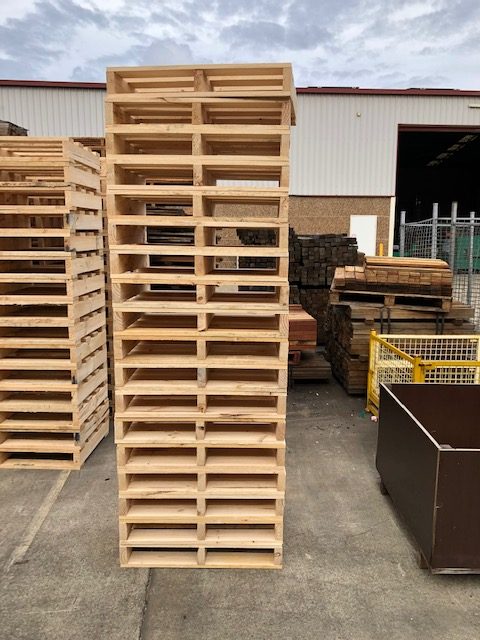Within the ever-evolving domain of logistics and supply chain operations, the significance of efficient goods transport cannot be overstated. A main of the key fundamental components in this system is the pallet, a apparently straightforward but extremely versatile instrument that plays a crucial role in transporting goods and maximizing storage. Amongst the various types of pallets available, wooden pallets are notable for their durability, strength, and eco-friendliness, which makes them a popular choice in numerous industries.
As businesses look for innovative answers to enhance their operational efficiency, the design of pallets has also been revolutionized. Modern innovations in pallet design not only enhance the way goods are handled but also contribute to better space management in warehouses and transportation vehicles. By redefining traditional models and adding new materials and techniques, companies can streamline their logistics processes and reduce costs, all while ensuring that products get at their final locations securely and efficiently.
Types of Wooden Pallets
Pallets made of wood come in various designs and builds, each tailored to specific transportation and storage needs. The most common type is the stringer pallet, which consists of multiple wooden beams running in alignment to the load direction. This configuration provides sturdiness and stability, making it ideal for stacking and handling with forklifts. The stringer pallet is versatile and widely used across industries for both light and larger loads.
An additional significant type is the block pallet, which has blocks of wood between the deck boards, providing extra support and stability. This structure allows for easy handling from any angle, making it particularly suitable for automated systems. Block pallets are often used in storage facilities and distribution centers where effective movement and storage of goods are crucial. Their durability makes them a preferred choice for bulkier items.
Finally, there are double-faced pallets, which have deck boards on either side, allowing for loading and unloading from either direction. This adaptability can enhance efficiency in operations where rapid retrieval to goods is vital. Double-faced pallets are often used in environments where pallets might be flipped or switched during transportation, as they provide durability and versatility in handling different types of products. spintax ### Design Features for Efficiency
The design of wooden shipping platforms plays a crucial role in boosting the productivity of cargo handling. A well-constructed wooden pallet provides a sturdy base that can support a diverse selection of loads while guaranteeing balance during shipping. pallets in tulsa of top-grade, sustainably sourced wood not only contributes to strength but also reduces the risk of loss to the goods being transported. Moreover, the capability to customize the shape and configuration of wooden pallets allows businesses to enhance space efficiency, making them versatile to multiple products and inventory configurations.
A further key characteristic of wooden pallets is their minimal weight, which enables simple handling and shipping. The inclusion of human-centric designs, such as rounded edges and smooth surfaces, boosts user experience by minimizing the risk of accidents when hoisting or piling pallets. Additionally, the possibility for two-way or four-way entry designs provides versatility in approaching the pallets with various types of handling machinery, thereby speeding up loading and unloading processes.
In conclusion, the stackability of wooden pallets allows effective utilization of vertical space in warehouses and during transportation. When stacked properly, these pallets can increase storage capacity and minimize the overall space usage for products. This does not only streamline warehouse management but also lowers transportation costs by enabling more products to be transported at once. The innovative design features of wooden pallets contribute significantly to the effectiveness of goods movement, making sure that businesses can operate smoothly and successfully.
Sustainability in Pallet Production

The manufacturing of wooden pallets plays a vital role in advancing sustainability within the transportation field. Utilizing renewable resources, wooden pallets are frequently constructed from ethically procured timber, ensuring that the environmental impact is minimized. This wood is compostable and can be recycled for various applications after its lifecycle in goods movement is over, reducing waste in landfills.
Moreover, advancements in pallet engineering and production methods are improving the sustainability of wood pallets. For instance, manufacturers are more often adopting practices such as using reused wood or integrating eco-friendly treatments that prolong the lifespan of pallets without relying on harmful chemicals. These improvements not only enhance the performance of pallets but also strengthen the commitment to environmental sustainability within the field.
Finally, the delivery of wooden pallets frequently results in diminished carbon footprints compared to alternatives made from resins or metal. The lightweight nature of wooden pallets can help reduce energy use during transportation. As companies and logistics providers continue to prioritize sustainability, wooden pallets stand out as an optimal and eco-friendly option for goods movement, aligning global efforts to foster greener supply chain practices.
